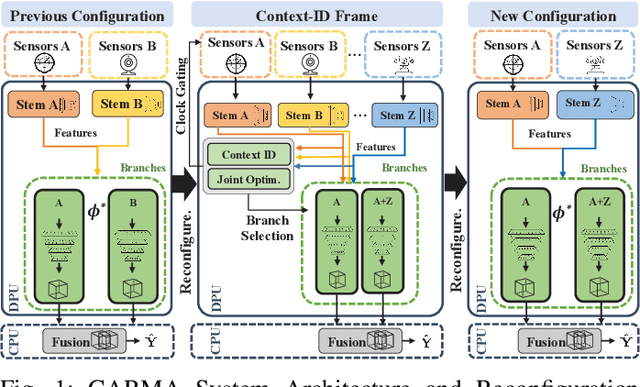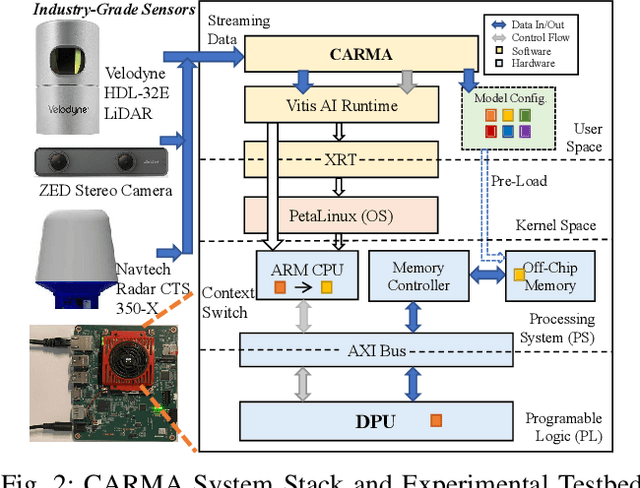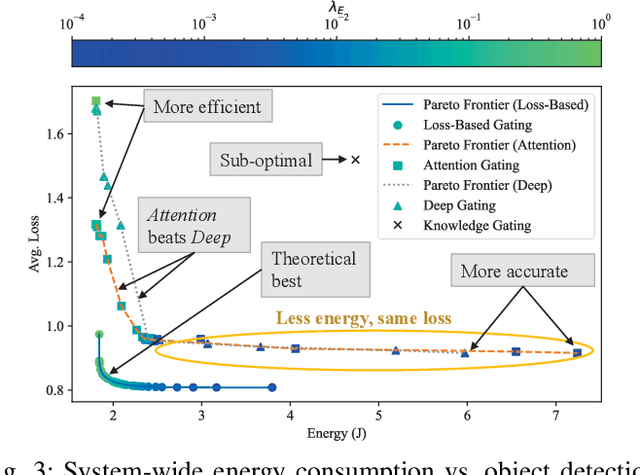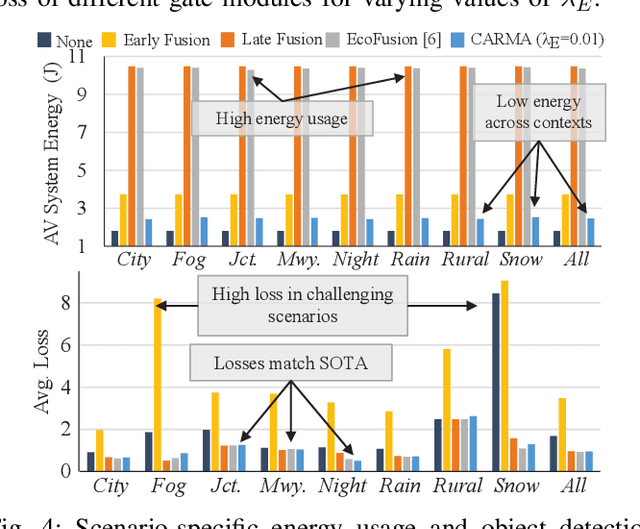Sitao Huang
MONAS: Efficient Zero-Shot Neural Architecture Search for MCUs
Aug 26, 2024Abstract:Neural Architecture Search (NAS) has proven effective in discovering new Convolutional Neural Network (CNN) architectures, particularly for scenarios with well-defined accuracy optimization goals. However, previous approaches often involve time-consuming training on super networks or intensive architecture sampling and evaluations. Although various zero-cost proxies correlated with CNN model accuracy have been proposed for efficient architecture search without training, their lack of hardware consideration makes it challenging to target highly resource-constrained edge devices such as microcontroller units (MCUs). To address these challenges, we introduce MONAS, a novel hardware-aware zero-shot NAS framework specifically designed for MCUs in edge computing. MONAS incorporates hardware optimality considerations into the search process through our proposed MCU hardware latency estimation model. By combining this with specialized performance indicators (proxies), MONAS identifies optimal neural architectures without incurring heavy training and evaluation costs, optimizing for both hardware latency and accuracy under resource constraints. MONAS achieves up to a 1104x improvement in search efficiency over previous work targeting MCUs and can discover CNN models with over 3.23x faster inference on MCUs while maintaining similar accuracy compared to more general NAS approaches.
TBA: Faster Large Language Model Training Using SSD-Based Activation Offloading
Aug 19, 2024



Abstract:The growth rate of the GPU memory capacity has not been able to keep up with that of the size of large language models (LLMs), hindering the model training process. In particular, activations -- the intermediate tensors produced during forward propagation and reused in backward propagation -- dominate the GPU memory use. To address this challenge, we propose TBA to efficiently offload activations to high-capacity NVMe SSDs. This approach reduces GPU memory usage without impacting performance by adaptively overlapping data transfers with computation. TBA is compatible with popular deep learning frameworks like PyTorch, Megatron, and DeepSpeed, and it employs techniques such as tensor deduplication, forwarding, and adaptive offloading to further enhance efficiency. We conduct extensive experiments on GPT, BERT, and T5. Results demonstrate that TBA effectively reduces 47% of the activation peak memory usage. At the same time, TBA perfectly overlaps the I/O with the computation and incurs negligible performance overhead. We introduce the recompute-offload-keep (ROK) curve to compare the TBA offloading with other two tensor placement strategies, keeping activations in memory and layerwise full recomputation. We find that TBA achieves better memory savings than layerwise full recomputation while retaining the performance of keeping the activations in memory.
RSEND: Retinex-based Squeeze and Excitation Network with Dark Region Detection for Efficient Low Light Image Enhancement
Jun 14, 2024Abstract:Images captured under low-light scenarios often suffer from low quality. Previous CNN-based deep learning methods often involve using Retinex theory. Nevertheless, most of them cannot perform well in more complicated datasets like LOL-v2 while consuming too much computational resources. Besides, some of these methods require sophisticated training at different stages, making the procedure even more time-consuming and tedious. In this paper, we propose a more accurate, concise, and one-stage Retinex theory based framework, RSEND. RSEND first divides the low-light image into the illumination map and reflectance map, then captures the important details in the illumination map and performs light enhancement. After this step, it refines the enhanced gray-scale image and does element-wise matrix multiplication with the reflectance map. By denoising the output it has from the previous step, it obtains the final result. In all the steps, RSEND utilizes Squeeze and Excitation network to better capture the details. Comprehensive quantitative and qualitative experiments show that our Efficient Retinex model significantly outperforms other CNN-based models, achieving a PSNR improvement ranging from 0.44 dB to 4.2 dB in different datasets and even outperforms transformer-based models in the LOL-v2-real dataset.
TG-NAS: Leveraging Zero-Cost Proxies with Transformer and Graph Convolution Networks for Efficient Neural Architecture Search
Mar 30, 2024Abstract:Neural architecture search (NAS) is an effective method for discovering new convolutional neural network (CNN) architectures. However, existing approaches often require time-consuming training or intensive sampling and evaluations. Zero-shot NAS aims to create training-free proxies for architecture performance prediction. However, existing proxies have suboptimal performance, and are often outperformed by simple metrics such as model parameter counts or the number of floating-point operations. Besides, existing model-based proxies cannot be generalized to new search spaces with unseen new types of operators without golden accuracy truth. A universally optimal proxy remains elusive. We introduce TG-NAS, a novel model-based universal proxy that leverages a transformer-based operator embedding generator and a graph convolution network (GCN) to predict architecture performance. This approach guides neural architecture search across any given search space without the need of retraining. Distinct from other model-based predictor subroutines, TG-NAS itself acts as a zero-cost (ZC) proxy, guiding architecture search with advantages in terms of data independence, cost-effectiveness, and consistency across diverse search spaces. Our experiments showcase its advantages over existing proxies across various NAS benchmarks, suggesting its potential as a foundational element for efficient architecture search. TG-NAS achieves up to 300X improvements in search efficiency compared to previous SOTA ZC proxy methods. Notably, it discovers competitive models with 93.75% CIFAR-10 accuracy on the NAS-Bench-201 space and 74.5% ImageNet top-1 accuracy on the DARTS space.
MicroNAS: Zero-Shot Neural Architecture Search for MCUs
Jan 17, 2024Abstract:Neural Architecture Search (NAS) effectively discovers new Convolutional Neural Network (CNN) architectures, particularly for accuracy optimization. However, prior approaches often require resource-intensive training on super networks or extensive architecture evaluations, limiting practical applications. To address these challenges, we propose MicroNAS, a hardware-aware zero-shot NAS framework designed for microcontroller units (MCUs) in edge computing. MicroNAS considers target hardware optimality during the search, utilizing specialized performance indicators to identify optimal neural architectures without high computational costs. Compared to previous works, MicroNAS achieves up to 1104x improvement in search efficiency and discovers models with over 3.23x faster MCU inference while maintaining similar accuracy
CARMA: Context-Aware Runtime Reconfiguration for Energy-Efficient Sensor Fusion
Jun 27, 2023



Abstract:Autonomous systems (AS) are systems that can adapt and change their behavior in response to unanticipated events and include systems such as aerial drones, autonomous vehicles, and ground/aquatic robots. AS require a wide array of sensors, deep-learning models, and powerful hardware platforms to perceive and safely operate in real-time. However, in many contexts, some sensing modalities negatively impact perception while increasing the system's overall energy consumption. Since AS are often energy-constrained edge devices, energy-efficient sensor fusion methods have been proposed. However, existing methods either fail to adapt to changing scenario conditions or to optimize energy efficiency system-wide. We propose CARMA: a context-aware sensor fusion approach that uses context to dynamically reconfigure the computation flow on a Field-Programmable Gate Array (FPGA) at runtime. By clock-gating unused sensors and model sub-components, CARMA significantly reduces the energy used by a multi-sensory object detector without compromising performance. We use a Deep-learning Processor Unit (DPU) based reconfiguration approach to minimize the latency of model reconfiguration. We evaluate multiple context-identification strategies, propose a novel system-wide energy-performance joint optimization, and evaluate scenario-specific perception performance. Across challenging real-world sensing contexts, CARMA outperforms state-of-the-art methods with up to 1.3x speedup and 73% lower energy consumption.
DistHD: A Learner-Aware Dynamic Encoding Method for Hyperdimensional Classification
Apr 11, 2023



Abstract:Brain-inspired hyperdimensional computing (HDC) has been recently considered a promising learning approach for resource-constrained devices. However, existing approaches use static encoders that are never updated during the learning process. Consequently, it requires a very high dimensionality to achieve adequate accuracy, severely lowering the encoding and training efficiency. In this paper, we propose DistHD, a novel dynamic encoding technique for HDC adaptive learning that effectively identifies and regenerates dimensions that mislead the classification and compromise the learning quality. Our proposed algorithm DistHD successfully accelerates the learning process and achieves the desired accuracy with considerably lower dimensionality.
Late Breaking Results: Scalable and Efficient Hyperdimensional Computing for Network Intrusion Detection
Apr 11, 2023Abstract:Cybersecurity has emerged as a critical challenge for the industry. With the large complexity of the security landscape, sophisticated and costly deep learning models often fail to provide timely detection of cyber threats on edge devices. Brain-inspired hyperdimensional computing (HDC) has been introduced as a promising solution to address this issue. However, existing HDC approaches use static encoders and require very high dimensionality and hundreds of training iterations to achieve reasonable accuracy. This results in a serious loss of learning efficiency and causes huge latency for detecting attacks. In this paper, we propose CyberHD, an innovative HDC learning framework that identifies and regenerates insignificant dimensions to capture complicated patterns of cyber threats with remarkably lower dimensionality. Additionally, the holographic distribution of patterns in high dimensional space provides CyberHD with notably high robustness against hardware errors.
PIGEON: Optimizing CUDA Code Generator for End-to-End Training and Inference of Relational Graph Neural Networks
Jan 16, 2023Abstract:Relational graph neural networks (RGNNs) are graph neural networks (GNNs) with dedicated structures for modeling the different types of nodes and/or edges in heterogeneous graphs. While RGNNs have been increasingly adopted in many real-world applications due to their versatility and accuracy, they pose performance and system design challenges due to their inherent computation patterns, gap between the programming interface and kernel APIs, and heavy programming efforts in optimizing kernels caused by their coupling with data layout and heterogeneity. To systematically address these challenges, we propose Pigeon, a novel two-level intermediate representation (IR) and its code generator framework, that (a) represents the key properties of the RGNN models to bridge the gap between the programming interface and kernel APIs, (b) decouples model semantics, data layout, and operators-specific optimization from each other to reduce programming efforts, (c) expresses and leverages optimization opportunities in inter-operator transforms, data layout, and operator-specific schedules. By building on one general matrix multiply (GEMM) template and a node/edge traversal template, Pigeon achieves up to 7.8x speed-up in inference and 5.6x speed-up in training compared with the state-of-the-art public systems in select models, i.e., RGCN, RGAT, HGT, when running heterogeneous graphs provided by Deep Graph Library (DGL) and Open Graph Benchmark (OGB). Pigeon also triggers fewer out-of-memory (OOM) errors. In addition, we propose linear operator fusion and compact materialization to further accelerate the system by up to 2.2x.
Chimera: A Hybrid Machine Learning Driven Multi-Objective Design Space Exploration Tool for FPGA High-Level Synthesis
Jul 03, 2022Abstract:In recent years, hardware accelerators based on field-programmable gate arrays (FPGAs) have been widely adopted, thanks to FPGAs' extraordinary flexibility. However, with the high flexibility comes the difficulty in design and optimization. Conventionally, these accelerators are designed with low-level hardware descriptive languages, which means creating large designs with complex behavior is extremely difficult. Therefore, high-level synthesis (HLS) tools were created to simplify hardware designs for FPGAs. They enable the user to create hardware designs using high-level languages and provide various optimization directives to help to improve the performance of the synthesized hardware. However, applying these optimizations to achieve high performance is time-consuming and usually requires expert knowledge. To address this difficulty, we present an automated design space exploration tool for applying HLS optimization directives, called Chimera, which significantly reduces the human effort and expertise needed for creating high-performance HLS designs. It utilizes a novel multi-objective exploration method that seamlessly integrates active learning, evolutionary algorithm, and Thompson sampling, making it capable of finding a set of optimized designs on a Pareto curve with only a small number of design points evaluated during the exploration. In the experiments, in less than 24 hours, this hybrid method explored design points that have the same or superior performance compared to highly optimized hand-tuned designs created by expert HLS users from the Rosetta benchmark suite. In addition to discovering the extreme points, it also explores a Pareto frontier, where the elbow point can potentially save up to 26\% of Flip-Flop resource with negligibly higher latency.
 Add to Chrome
Add to Chrome Add to Firefox
Add to Firefox Add to Edge
Add to Edge